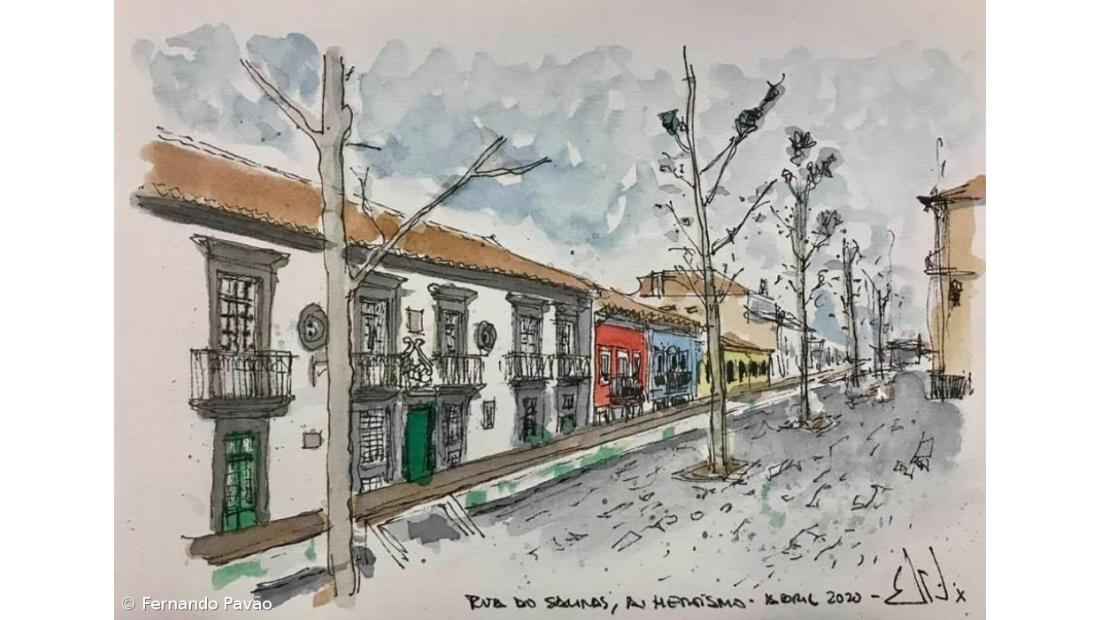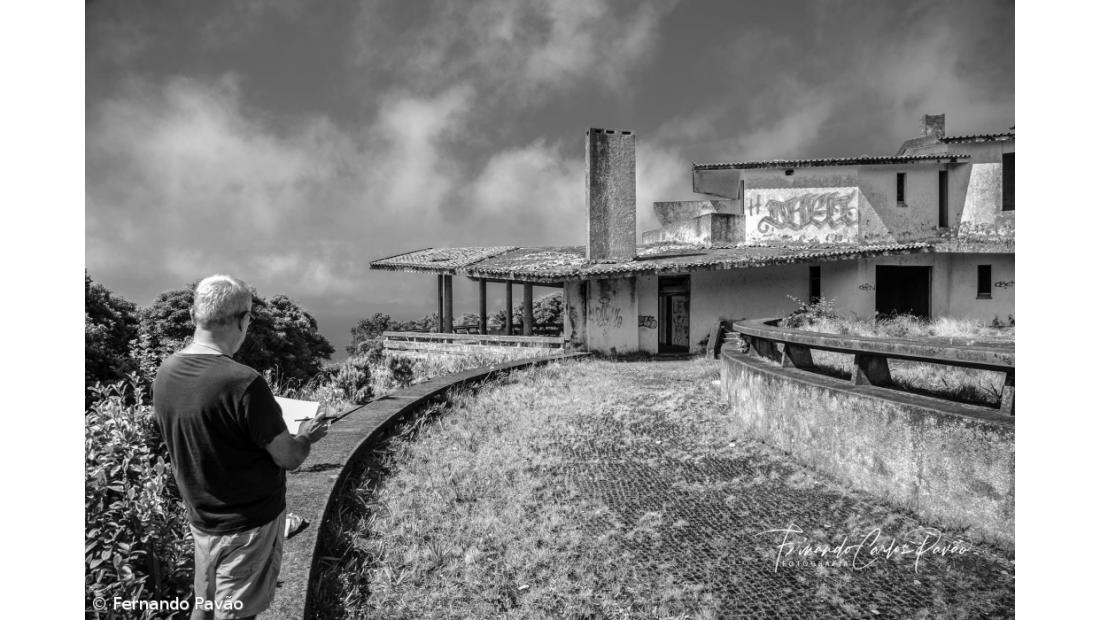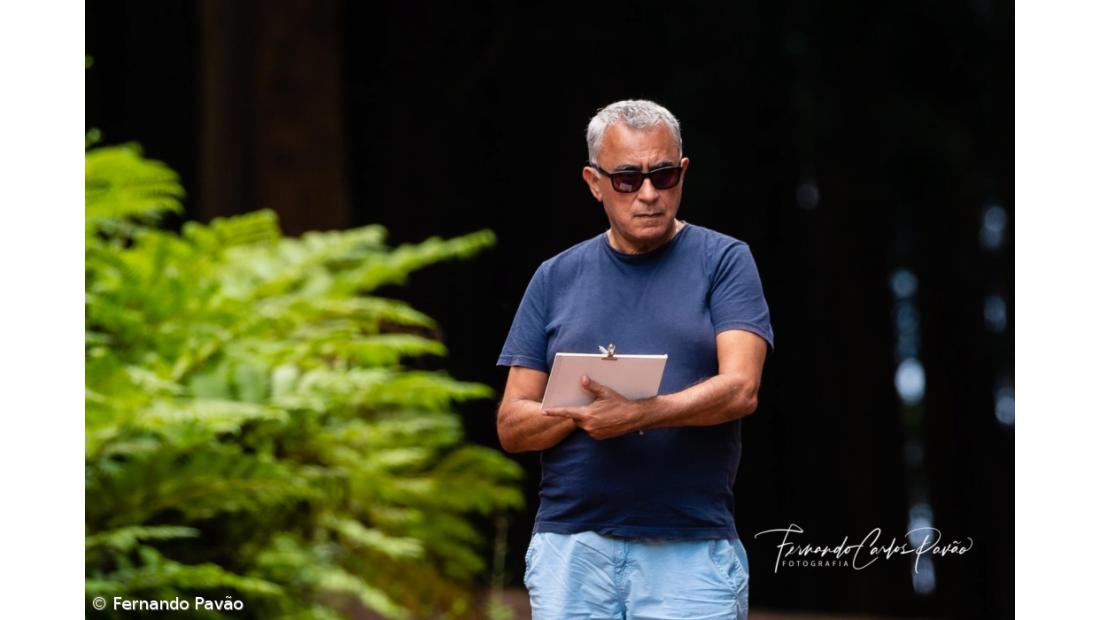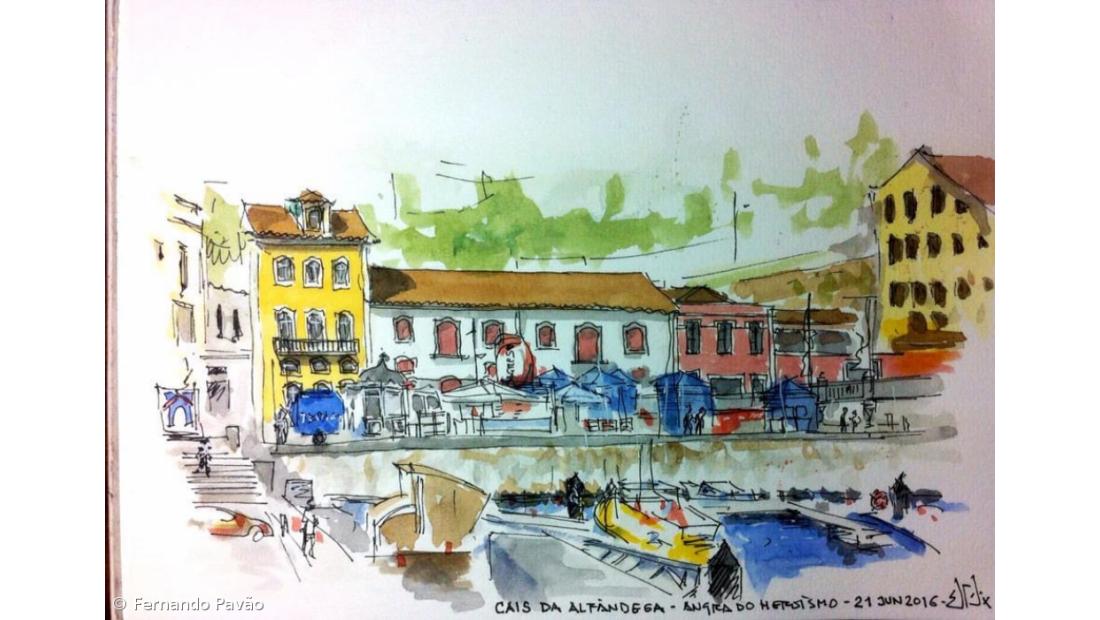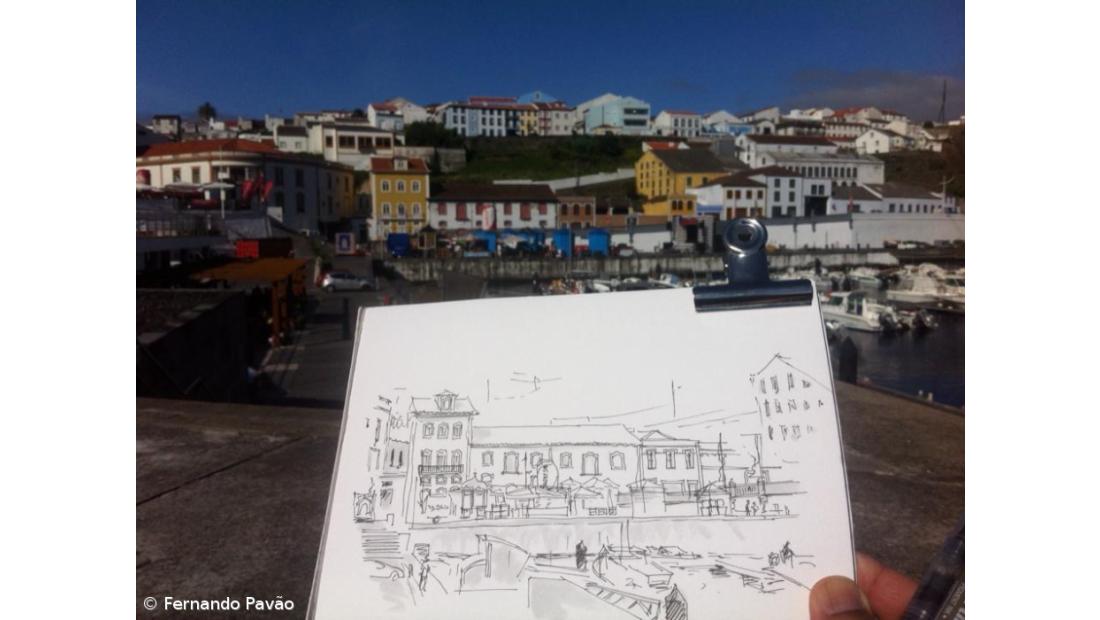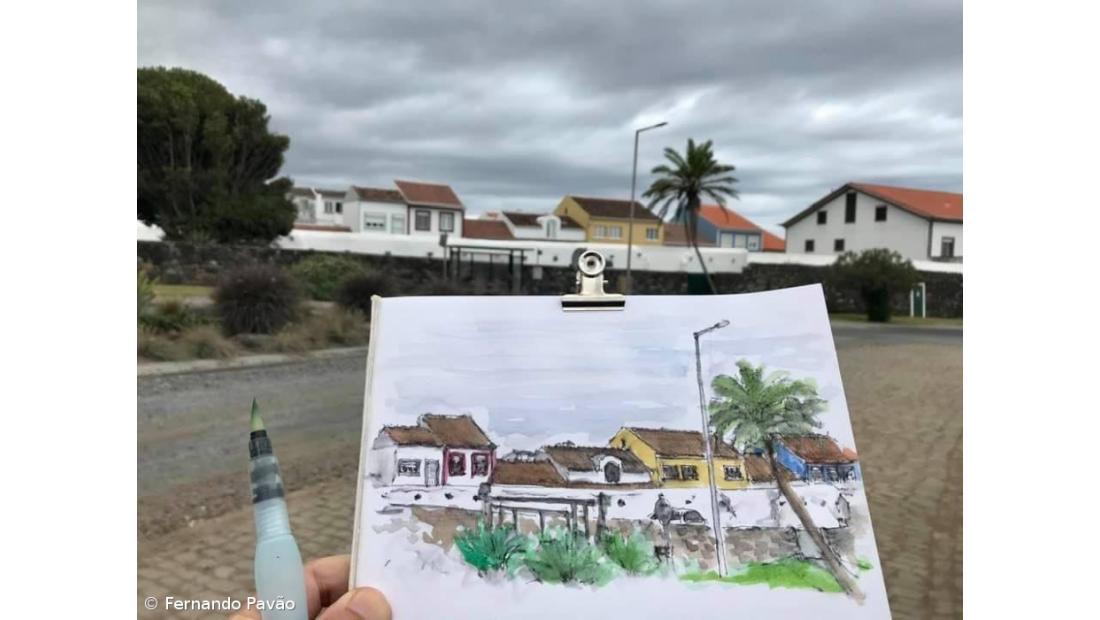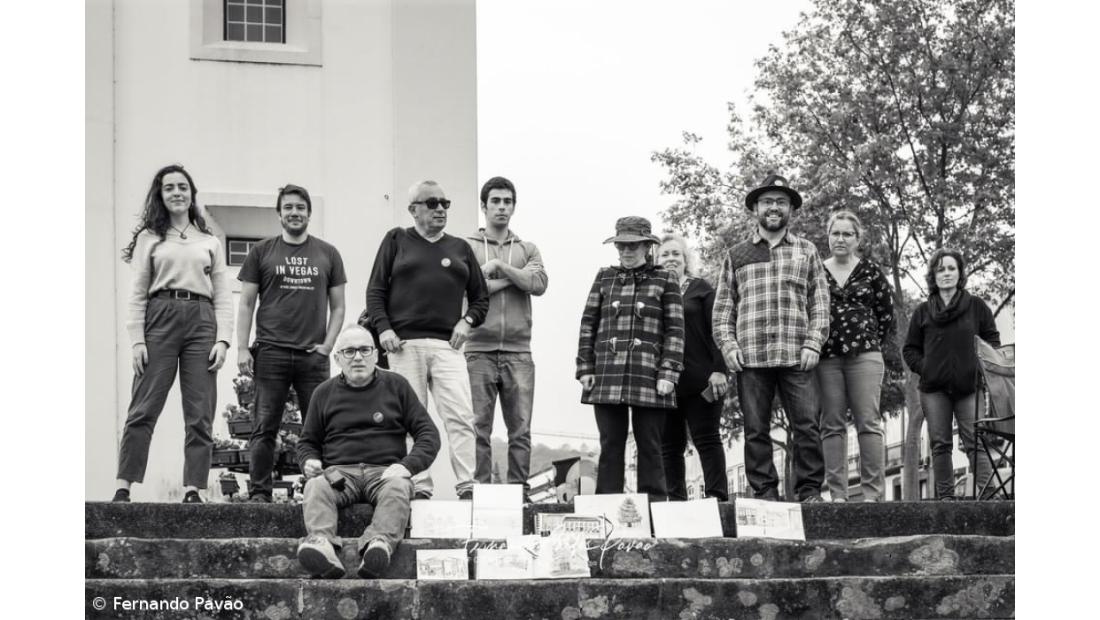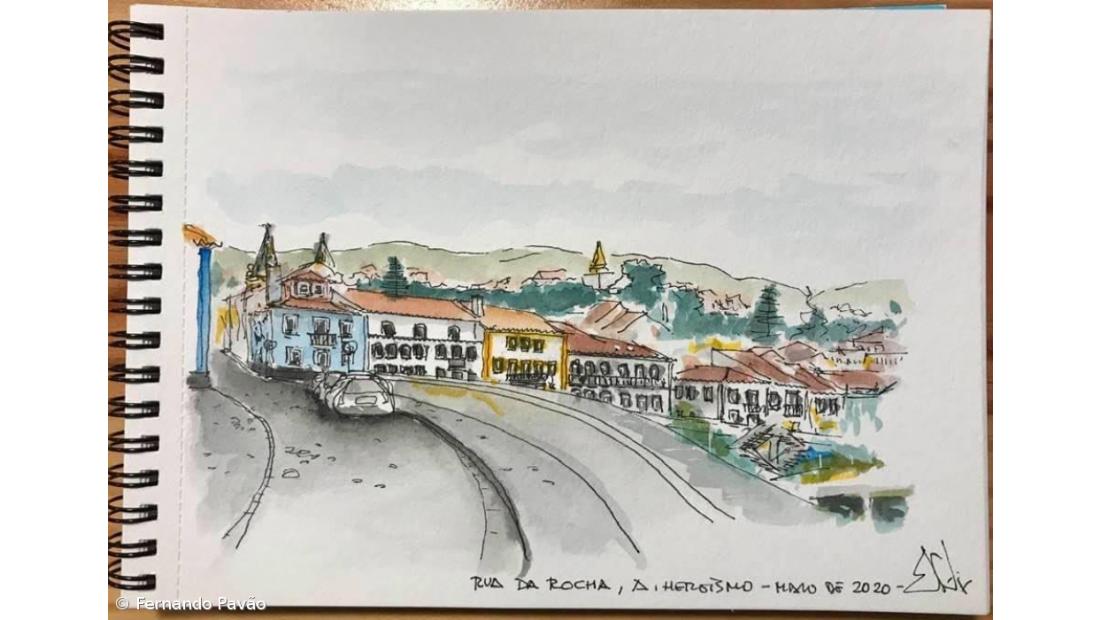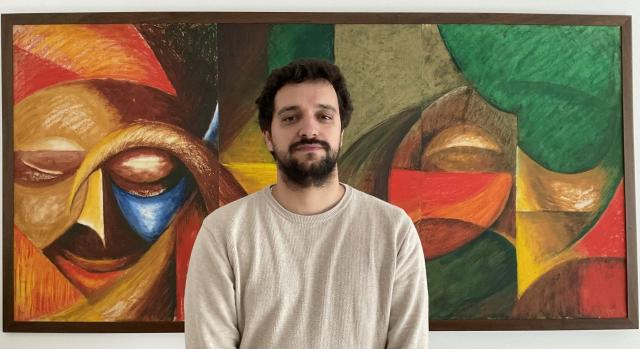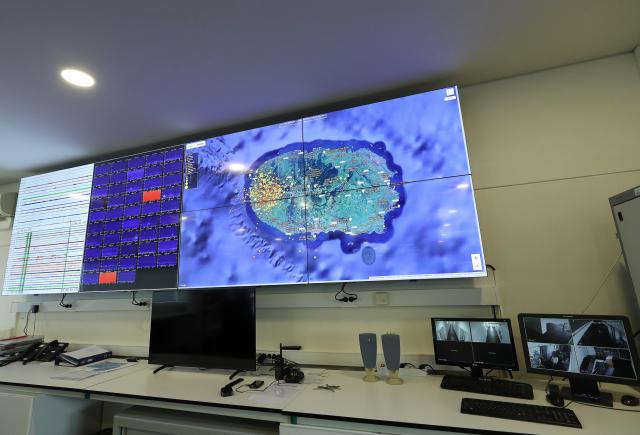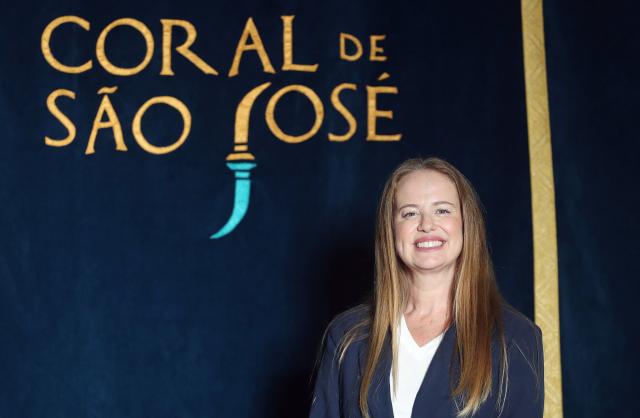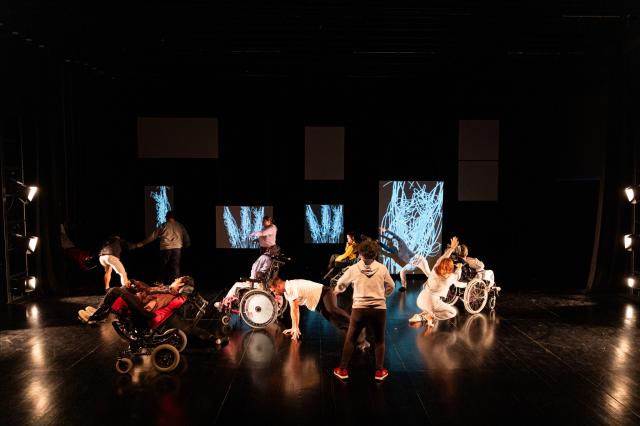He is trained in restoration of easel painting and polychrome sculpture and worked for five years at the then Centro de Estudo, Conservação e Restauro de Obras de Arte dos Açores (Azores Center for the Study, Preservation and Restoration of Art), in Angra do Heroísmo, where, in parallel, he worked with architectural design. He is the author of numerous posters, catalogs, logos, cartoons, covers and book illustrations.
He is also the author of several urban interventions and architectural projects, namely for municipalities in the Azores.
Lately, he has been working with urban sketching, both individually and in local groups of which he is a member and co-founder.
Being the son of writer Emanuel Félix gave him the privilege of growing up with the arts in the halls of his home. The artist from Terceira talked to Açoriano Oriental.
You grew up in the middle of literature, but it was the plastic arts that impressed you. How did you manage this?
I grew up, effectively, with a father who is a poet and a writer, in the middle of a few thousand books, many of them about the various forms of art, but also in the middle of paintings and drawings. Your question (and thank you for that!) made me think of something I hadn't thought of before, at least consciously: I was still very small when my father and the painter Rogério Silva founded, on the first floor of his residence, at Rua Pêro Anes do Canto, in Angra do Heroísmo, an art gallery. It was called "Gávea". I remember the numerous exhibitions I had the opportunity to see at that time and that, I now acknowledge, have triggered the will to scratch and scribble that remains to this day.
Is it expected that a writer's son is also a writer or was there acceptance?
I don't think that's necessarily the case, since this is not a professional activity. More easily will the son of a doctor be expected to be a doctor, or of a lawyer or a carpenter, etc. I've never been good at writing, especially poetry (my sister was the one inheriting that) and I've never felt any kind of external or internal pressure to be anything. I was lucky enough to be provided with small books to read, writing material, but also drawing, painting, etc. I had freedom to choose whatever I wanted.
Have the arts always lived in the halls of the house?
I spent my childhood and adolescence in an environment of intense cultural diversity. My parents' house, despite exiguous, was a real meeting point for writers, poets, painters, sculptors, musicians, etc. To have the great Carlos Paredes playing in the room for my father, to accompany the birth of songs by Vasco Pereira da Costa and Carlos Alberto Moniz, to hear Maria do Amparo playing and singing, to hear poetry by Carlos Faria, plays by the playwright (and painter) Norberto Ávila, José Orlando Bretão, texts by Dias de Melo, read by them, among many others like Álamo Oliveira, João de Melo, Vamberto Freitas, Onésimo Teotónio de Almeida, Marcolino Candeias, Rui Duarte Rodrigues, seeing José Lúcio Lima, David de Almeida and José Pádua drawing at home, meeting with the painter Tomás Vieira and sculpto Canto da Maia, entering the house and greeting José Fonseca e Costa and José Cardoso Pires, meeting Paulo Gouveia and José Manuel Fernandes, great references of architecture, to name but a few, cannot fail to exert a strong influence on my way of thinking and way of seeing the world around me.
How was the passion for drawing and painting born?
It was born that way, naturally as I told you. I always walked around with my pockets full of pencils and pens and any piece of paper that appeared in front of me, even a piece of a restaurant’s tablecloth served to "exorcize" the set of doodles forming inside of me. Organizing and ordering them was always terrible!
What were your most outstanding exhibitions?
I started by exhibiting some works collectively with local artists. More recently, I was "prompted" by my friend Verónica Bettencourt, who even took care of the necessary logistics, and I exhibited individually in several spaces in the city of Angra and in Lisbon, at Casa dos Açores. I also had the pleasure of exhibiting at Carmina Galeria, as well as at the Luís da Silva Ribeiro Public Library, and at the moment I have an exhibition, mainly of sketches, at the Angra do Heroísmo Cultural and Congress Centre.
There was, however, an exhibition that was special for me, once again by Verónica's hand, in the gallery of the Delegation of Tourism in Angra, entitled "Scratches, Doodles and Asterisks". The scratches and doodles were mine and my youngest son's, Pedro Félix, who, at the time, was 8 years old, and the asterisks alluding to the texts, also exhibited, by my son João Félix.
How and when do Urban Sketchers appear?
A little over a decade ago, Seattle Times journalist and illustrator Gabriel Campanário, born in Barcelona, after having published his own drawings as an illustration for a report (that's a tip!), received an avalanche of requests from graphic designers to have some of their drawings published.
He selected and invited a hundred of them. The result was so "pandemic" that, a little bit all over the world, there were so many groups he decided to create his own statutes and draw up a manifesto whose precepts we must enforce. Since the Azores are still part of the world, they could not stay out of this movement. I decided to invite two friends (Manuel Meneses Martins and Rui Messias) to start a group and register nationally and internationally. We had the important support of two people who know how this movement works: Rosa Chaves, communication designer, coming from Torres Vedras, where there is a large community of Urban Sketchers, and Paulo Brilhante, from the island of São Miguel, who does me the favor of being my friend, and who is, for me, an excellent example of what a true Urban Sketcher is, both for his enormous quality and his persistence on drawing every day. At the same time a group of Urban Sketchers was born in Ponta Delgada, from which I received the honorable invitation to join. Territorial discontinuity and the consequent impossibility of participating in the meetings with the assiduity with which they happen was determinant for us to have our own group in Terceira.
What is Urban Sketching?
Urban Sketching consists of the observation and graphic recording, in space and time, usually in notebooks, on site and with maximum fidelity, of everything that can arouse our interest, if possible in order to tell a story. Fidelity here does not mean photographic rigor, nor geometric, nor anything that looks like it. It means that if there is a car, a person, etc., in the scenario we want to draw, it will be recorded. Contrary to what the name often suggests, Urban Sketchers do not draw only buildings or urban centers. We design outdoors, indoors, in our homes, in public spaces, in group meetings or whenever we feel like it, individually. It is not by chance that the motto of Urban Sketchers is "we show the world, one drawing at a time".
How’s the group working today?
The group, at this moment, is going through a very interesting phase. We have meetings every two weeks and we have always had a satisfactory number of participants, much thanks to Manuel Meneses Martins, who has scheduled and publicized all the meetings, who has organized and kept the page always updated, who has ensured the presence whenever possible of its members and the recent appearance of new participants. For some time now, the excellent photographer Fernando Pavão has been working with us, and, besides honoring us with his presence, has covered our meetings and enriched our website with true works of art.
Is there talent for this art on Terceira island?
There is talent on Terceira island, as there is talent anywhere in the world. There is talent in any of us. It is not necessary to meet any special requirement, you just need to enjoy drawing. It is not necessary to be an artist to be an urban sketcher. Art presupposes a creativity that is not required in this activity. The graphic diary is like the written diary: it is not necessary to be a writer or a poet to write day by day in a notebook. Everyone has a line of their own, as everyone has their own handwriting and their own way of seeing things.
Do you usually interact with Urban Sketchers from other parts of the country?
Yes, the country and the world. Social networks have come to enhance these exchanges, providing us with the possibility to see what others are doing. There are many groups and there are many pages open to everyone who wants to share their work. Also, whenever one of us goes to a place where there are other groups, it is normal to participate in their meetings and draw together. Both Portuguese and foreigners have joined us because they know of our existence. I have had the pleasure of drawing in Terceira with Alexandra Baptista and Sofia Carolina Botelho, with Graça Viveiros and several times with Paulo Brilhante. At the invitation of Paulo and Susana Teles Margarido, from the group of street designers "Vadios Azores Sketchers", I was, in January, on the island of São Miguel where, for two days, we draw together, sharing experiences and moments.
Which drawing(s) had the biggest impact on you?
We are always impacted by the drawings we think come out well and by those we associate with special moments. But there is one drawing that I especially like. It's from 1979 and it represents the houses I used to pass by when going from my place to my paternal grandparents' house. Soon after, those houses would be destroyed by the earthquake of January 1980. It was perhaps my first "Urban Sketch" and it is the drawing I have today on the profile cover of my personal Facebook page.
Technically speaking, what is your best drawing?
My best drawing will always be the one that says more about me than about the object drawn. It will be the one that, considering its line, characteristics and truth, will tell you that I am the one on the other side.
What dreams do you have for the urban sketchers of Terceira island?
I hope and wish that the urban sketchers group of Terceira Island will continue to grow in number of members and participants, and that it will keep, at least, the dynamic it has reached to this point. I hope it remains “adult” and that it will be able to continue attracting, above all. those who wrongly say "I don't know how to draw".

